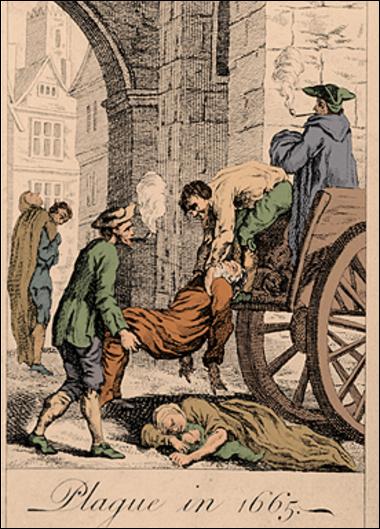The Black Death, one of the most devastating pandemics in human history, emerged in the early 14th century and left an indelible mark on Europe and neighboring regions.
This deadly disease, likely originating in Central Asia, swept through continents, causing widespread panic, death, and societal upheaval. Over the course of several centuries, it reshaped economies, societies, and cultures.
This timeline provides an overview of key events in the progression of the Black Death, from its origins to the groundbreaking discoveries of the 19th and 20th centuries that brought it under control.
| Year | Event |
|---|---|
| 1331-1337 | Black Death likely originates in Central Asia. |
| 1347 | Black Death reaches the Crimea in the Black Sea. |
| 1347-1348 | Black Death arrives in Europe through various entry points. |
| 1348 | Plague reaches the British Isles and Scandinavia. |
| 1349 | Continues to spread across Europe, including Poland, Hungary, and the Baltic states. |
| 1347-1351 | Black Death peaks in mortality with millions of deaths. |
| 1350-1353 | Begins to subside in Europe, with occasional outbreaks. |
| 1361-1362 | Second wave of the Black Death strikes Europe. |
| 1374 | Third wave affects Russia. |
| 1380s | Black Death largely subsides in Europe. |
| 1894 | Yersinia pestis, the causative agent, is discovered. |
| 20th c. | Effective antibiotics developed for treatment. |
Timeline of the Black Death
1331-1337: Black Death likely originates in Central Asia
The Black Death, one of the deadliest pandemics in history, is believed to have originated in Central Asia, particularly in the early 1330s.
It emerged in the region that encompasses modern-day Kyrgyzstan. However, the exact source and initial transmission of the disease remain subjects of ongoing study and debate.
Also Read: Facts About the Black Death
The prevailing theory suggests that the plague likely began in rodents and was transmitted to humans through fleas that infested these animals. Central Asia’s significant role in trade along the Silk Road could have facilitated the transmission of the disease to various parts of the world.

1347: Black Death reaches the Crimea in the Black Sea
The Black Death’s relentless spread continued as it reached the Crimean Peninsula, located along the Black Sea.
A pivotal event occurred in the city of Caffa, now known as Feodosiya, on the Crimean coast. Caffa was a bustling trading center, attracting merchants and travelers from various regions.
During this period, the city was under siege by the Mongols. It’s believed that the siege of Caffa played a role in the further dissemination of the plague.
Also Read:
Some accounts describe a gruesome tactic employed by the besieging forces: the catapulting of plague-ridden corpses into the city to spread the disease among the population.
This method, combined with the movement of infected individuals fleeing the city, likely contributed to the rapid spread of the Black Death to other parts of Europe.
1347-1348: Black Death arrives in Europe through various entry points
The Black Death made a devastating entrance into Europe in 1347. The first documented entry point was the port of Messina in Sicily, where 12 Genoese trading ships arrived.
These ships carried crew members who were infected with the plague. This event is considered the starting point of the European outbreak.
Following its introduction in Sicily, the disease quickly spread to other parts of Italy, France, and Spain. The highly interconnected trade routes and bustling urban centers of Europe facilitated its rapid transmission.
The plague made its way to cities such as Florence, Venice, Paris, and London, sowing panic and causing widespread death.
The years 1347 to 1348 marked the early stages of the Black Death’s devastating impact on Europe. This pandemic would go on to reshape European society, culture, and history, leaving an indelible mark on the continent.
1348: Plague reaches the British Isles and Scandinavia
By the year 1348, the Black Death had firmly established its presence in continental Europe, and it continued its relentless march. It reached the British Isles, bringing devastation to England and Scotland. The spread of the disease to this region likely occurred through trade routes and maritime connections.
In Scandinavia, particularly in Norway and Sweden, the plague also made its presence known during this year. Coastal towns and cities were particularly vulnerable due to their trading activities and connections with other parts of Europe.
As the Black Death arrived in these regions, it unleashed a wave of fear and death, leaving communities in mourning and despair.
1349: Continues to spread across Europe, including Poland, Hungary, and the Baltic states
The year 1349 marked a grim continuation of the Black Death’s rampage across Europe. It had already established a firm grip on many European nations, and its virulence showed no signs of abating.
Eastern and Central European regions, including Poland and Hungary, experienced the horrors of the plague as it spread through their territories. The Baltic states, too, were not spared from the relentless advance of the disease. Coastal cities that served as trade hubs faced particularly severe outbreaks.
The Black Death’s impact during this period was marked by high mortality rates, often reaching alarming levels. Entire communities and regions were left in chaos, and the social fabric of Europe was profoundly altered.
1347-1351: Black Death peaks in mortality with millions of deaths
The years 1347 to 1351 are often regarded as the peak of the Black Death’s devastation across Europe. During this period, the pandemic reached its highest mortality rates. Estimates suggest that tens of millions of people lost their lives during these years, with some areas experiencing mortality rates as high as 60% to 70%.
Cities, towns, and villages were overwhelmed by the rapid spread of the disease. Graveyards filled to capacity, and makeshift burial sites were created to accommodate the sheer number of victims.
The shortage of labor caused by the deaths of a significant portion of the population led to economic disruptions and labor shortages.
The psychological and societal impact was profound, leaving a lasting scar on the collective memory of those who lived through it. The Black Death, with its indiscriminate and swift lethality, brought about a dark and tragic chapter in European history.
1350-1353: Begins to subside in Europe, with occasional outbreaks
As the Black Death continued to ravage Europe, 1348 was a year of peak mortality. The pandemic had firmly entrenched itself in many European regions, causing widespread death and devastation.
Entire communities and cities were overwhelmed by the rapid spread of the disease. Mortality rates remained alarmingly high, often reaching 60% to 70% in some areas.
Graveyards were unable to accommodate the sheer number of victims, leading to makeshift burial sites and further exacerbating the horror.
1361-1362: Second wave of the Black Death strikes Europe
In the years 1361 and 1362, Europe faced a second wave of the Black Death. This resurgence of the plague brought additional suffering and death to a continent already scarred by the initial outbreak.
While this wave was not as severe as the first, it further strained communities and societies struggling to recover.
1374: Third wave affects Russia
By 1374, the Black Death had extended its reach to Russia. This marked the third major wave of the pandemic to affect Europe and neighboring regions.
Russia, with its vast territory and diverse population, experienced significant outbreaks. The plague impacted both urban and rural areas, affecting trade, agriculture, and daily life.
1380s: Black Death largely subsides in Europe
During the 1380s, the Black Death began to recede in Europe. The worst of the pandemic was behind, and many regions experienced a gradual return to stability. However, isolated outbreaks continued to occur in the following decades, particularly in areas with ongoing trade connections or newly affected regions.
1894: Yersinia pestis, the causative agent, is discovered
In 1894, the Swiss-French bacteriologist Alexandre Yersin made a groundbreaking discovery. He identified the bacterium responsible for the Black Death, which had plagued humanity for centuries. The bacterium was named Yersinia pestis in his honor.
This discovery marked a pivotal moment in medical history, leading to a deeper understanding of the plague’s causes and methods of transmission.
20th Century: Effective antibiotics developed for treatment
In the 20th century, advancements in medical science brought about effective antibiotics to combat Yersinia pestis infections. These antibiotics, such as streptomycin and tetracycline, proved highly effective in treating the bubonic and pneumonic forms of the disease.
This medical breakthrough transformed the prognosis for plague patients, turning a once-deadly disease into a treatable and curable condition.
